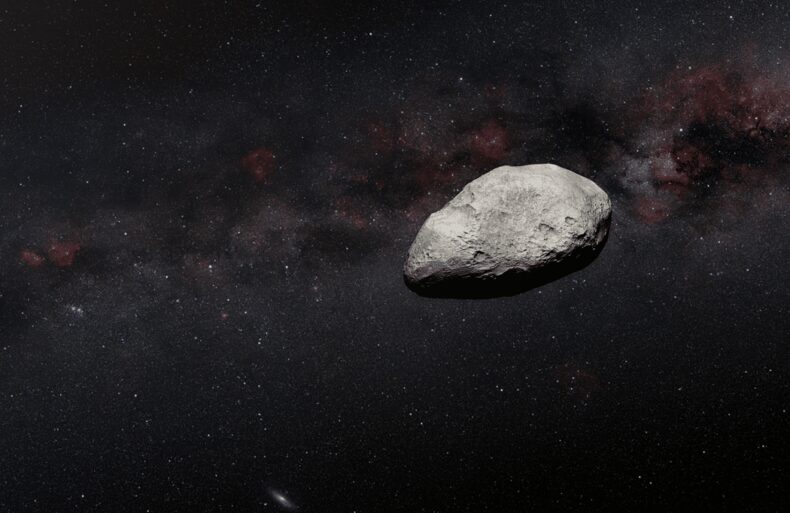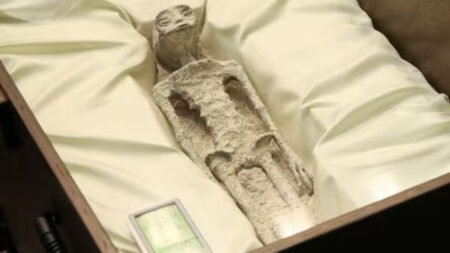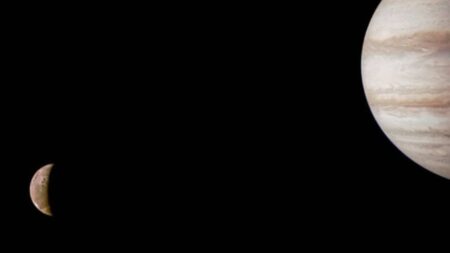In information gathered by Webb’s Mid-Infrared Instrument, a group of European astronomers discovered the asteroid. The object, which is most likely the smallest Webb has seen so far, may represent an example of an object under 0.6 miles (1 kilometer) in length within the main asteroid belt, lying between Mars and Jupiter.
An international team of European astronomers has used NASA’s James Webb Space Telescope to find an asteroid that is about the size of Rome’s Colosseum and ranges in length from 300 to 650 feet (100 to 200 meters). They used data from the calibration of the Mid-InfraRed Instrument (MIRI), where they unintentionally discovered an asteroid.
It is most likely the tiniest object Webb has seen yet and could be an example of an asteroid belt object that is less than 0.6 miles (1 km) long. Between Mars and Jupiter is where the major asteroid belt is found. To further accurately describe this object’s nature and characteristics, additional observations are required.

These Webb observations, which were reported in the journal Astronomy and Astrophysics, were actually calibration photographs of the main belt asteroid (10920) 1998 BC1, which scientists found in 1998. The calibration team believed the observations, which were made to evaluate the functioning of a few MIRI filters, had failed for technical reasons because of the brightness of the object and an off-center telescope pointing.
Nevertheless, the team’s analysis of the data on asteroid 10920 allowed them to develop and test a new method for estimating an object’s size and constraining its orbit. Using the MIRI observations along with information from ground-based telescopes and ESA’s Gaia Mission, the method’s validity was shown for asteroid 10920.

An Unexpected Find
We completely unexpectedly found a small asteroid in publicly available MIRI calibration observations, according to Thomas Müller, an astronomer at the Max Planck Institute for Extraterrestrial Physics in Germany. Due to the fact that these data are some of the first MIRI measurements to target the ecliptic plane, our research suggests that a significant number of new objects will be discovered with this instrument.
During the process of analyzing the MIRI data, the team discovered a smaller encroachment in the same field of view. The team’s findings show the object has a diameter of 100–200 meters, a very low orbital inclination, and was situated in the inner main-belt region during the Webb observations.
Müller said that his findings demonstrate that even ‘failed’ Webb observations may be scientifically useful if you have the correct perspective and a little bit of luck. “Our discovery is located in the main asteroid belt, yet Webb’s extraordinary sensitivity allowed us to observe this 100-meter-diameter rock from a distance of more than 100 million kilometers”.

Webb’s Capabilities
If verified as a new asteroid discovery, the team’s discovery of this asteroid, which they believe to be one of the tiniest ever found in the main belt and the smallest ever seen by Webb, will have significant ramifications for our knowledge of the genesis and evolution of the solar system.
Small asteroids have been researched in less depth than their larger counterparts due to the difficulty of spotting these objects, despite the fact that current models anticipate the presence of asteroids down to very small sizes. Astronomers will be able to examine asteroids under 1 km in diameter due to future dedicated Webb observations.
Additionally, this finding shows that Webb will be able to accidentally assist in the discovery of new asteroids. The team believes that even brief MIRI inspections close to the solar system’s plane will occasionally find a few asteroids, most of which will be unidentified objects.
More positional information with respect to background stars is needed from follow-up investigations to constrain the object’s orbit in order to validate that the object observed is a newly discovered asteroid.
According to Bryan Holler, a Webb support scientist at the Space Telescope Science Institute in Baltimore, Maryland, “this is a remarkable result that illustrates the capabilities of MIRI to serendipitously detect a previously undetectable size of asteroid in the main belt.” “Repeats of these observations are currently scheduled, and we fully expect further asteroid interlopers in those photos,” the statement continued.













